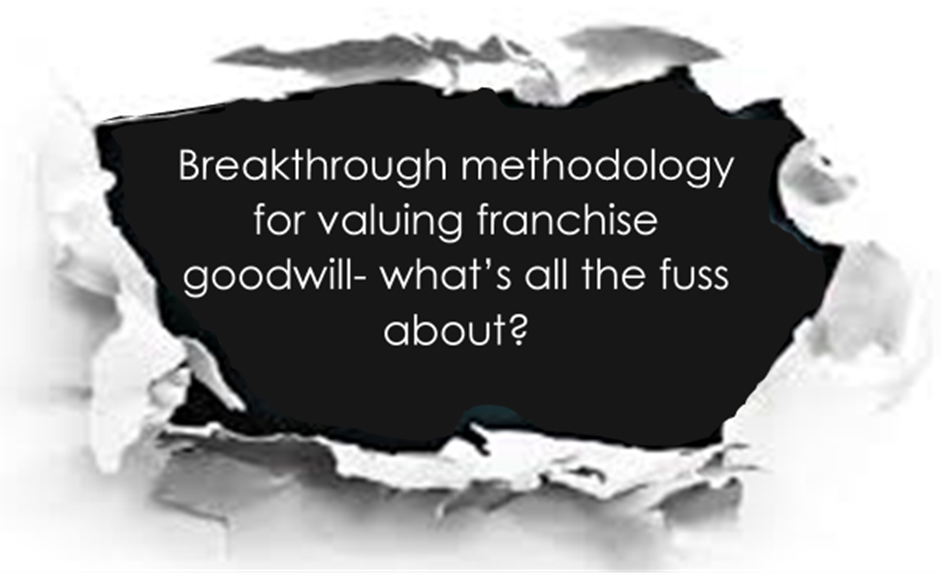Financial Reporting of Valuations facing tides of change

Recently John Price, ASIC’s Commissioner fired a warning shot across the bow of Companies to alert their Directors of the increasing malpractice of using “unrealistic assumptions” in testing the value of assets that have applied inappropriate approaches in areas such as revenue recognition”. As the horizon of financial reporting season approaches, the need for forensically sound valuation methodologies is paramount if your company is to weather the regulatory storm and tackle the rough seas ahead.
These practices may lead to misstatements about the value of goodwill, identifiable intangibles and other revenue generating assets. Given this backdrop, as companies approach the financial reporting horizon it is vital that they avoid the regulatory tide. While charting a right course to value non-financial assets may be complex and expensive, the risks of not getting it right may attract the regulator’s fog light whilst being stranded in a sea of rules, regulations and compliance.
It is not surprising that ASIC includes the determination of cash flows and underlying assumptions together with the calculation of discount rates as being problematic even for the most experienced Captain. This signals potential areas of scrutiny by the regulator which may rock an otherwise steady ship.
Don’t leave yourself stranded! Chart the right asset valuation course for your company!
In valuing goodwill, the challenge is to arrive at a methodology to determine the value of physical assets with earning power, and the value of the business as a whole.
The financial valuation process of most businesses are guided by three main rudders:
- the identification and valuation of operating and non-operating assets
- the future earning power of these assets
- the calculation of a discount rate
With regard to both asset classes, there is a corresponding need to determine individual assets within each class that will positively add to earnings as a going concern and those that will not. This process allows assets with earnings power to be capitalised (where cash-flows or net income are divided by an applicable rate) or discounted and those without, to be valued at net realisable value. Indeed, the value of any asset is a function of the cash-flows generated by that asset, their expected growth and the riskiness associated with their realisation.
The forecasting of cash-flows must contemplate the business as a going concern and upon its continuation in its present form, including its plans for the future. In so doing, regard is given to the endogenous factors affecting the business, such as future working capital requirements, the type, and the condition of equipment and technology employed, the impact of technological advances and their replacement costs, and the contribution of key personnel to the overall profitability of the business and the impact thereon given a change. Equally as important are those factors that are exogenous of the business.
They usually comprise marketplace conditions specific to business and its industry, the impact of any foreseeable changes in legislation or award conditions, such as a material increase in labour costs, the general movement in cost of funds, the likely growth dynamics of the industry and the spill-over effects in the markets in which the business operates. These factors carry different weight within the valuation framework but nonetheless play important roles.
To arrive at an appropriate discount rate requires the calculation of a risk premium the Holy Grail of valuation methodologies which can make or break the valuation approach and the ultimate value of the asset.
Referring to asset valuations, the Commissioner’s advises that there is “no need to be accounting experts” and that Captains should “seek explanations and expert involvement if needed. Where appropriate, they should challenge the financial report’s asset values”.
That being the case the imperative is for Directors to exercise utmost care and due diligence with all hands on deck to ensure that appropriate expertise is available and employed to ensure a safe financial reporting voyage. Amongst many things required for safe passage will be a sound valuation methodology underpinned by well researched and defended assumptions.
Dr Maurice Roussety is a Consulting Strategist for DST Advisory and Lecturer in Small Business, Franchising and Entrepreneurship at Griffith University in Queensland, Australia. He has worked with leading organisations such as Queensland Transport, IAG, Westpac, Australia Post, Coles Myer, Red Rooster, Commonwealth Bank, ACCC, and Optus. Maurice holds a PhD in Intellectual Property and Franchise Goodwill Valuation. He also holds a Master’s degree in Leadership and in Business Administration. He is available for consulting and public speaking engagements and can be contacted further at maurice@dstadvisory.com or you can visit him at www.mauriceroussety.com.au


